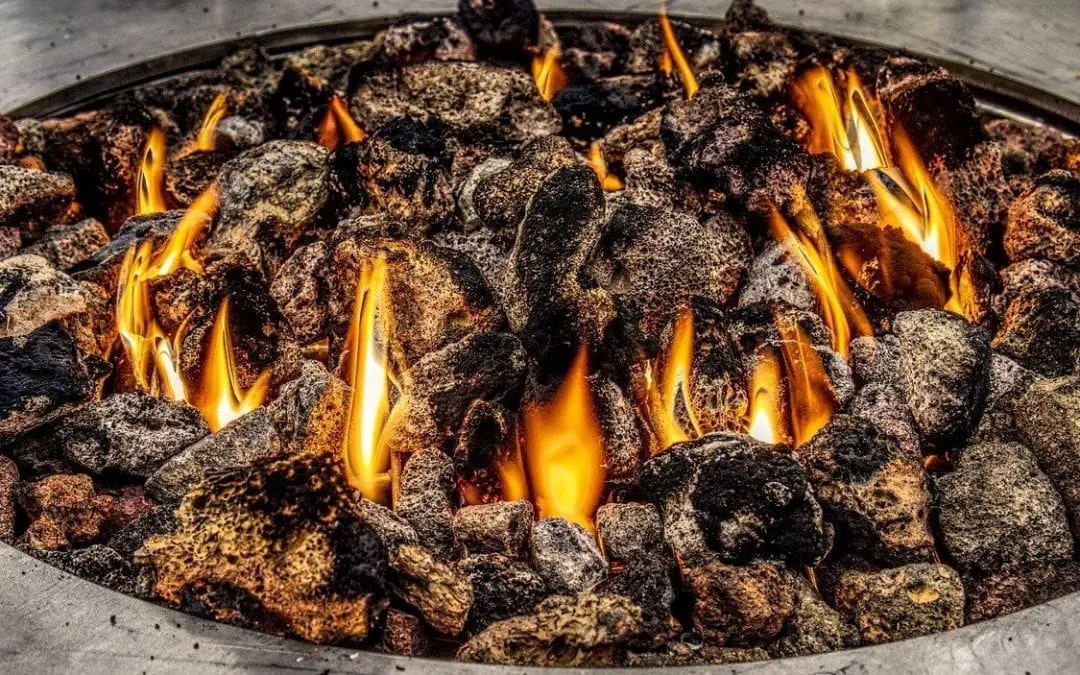Type of Fire Pit
There are two basic styles of fire pits: above-ground and in-ground. The above-ground types are wood or propane-powered and are portable, making them easy to move around your property. An in-ground fire pit takes more effort to install and is a semi-permanent feature.
When it comes to fire pit safety, both styles should be properly installed and follow similar safety protocols.
Install a Fire Pit Safely
Fire pit safety begins long before the first log is thrown on the fire. Build the fire pit on a flat, level space on your property. If you are digging, first call the underground utility services to find out if there are buried cables, wires, or pipes. Clear the area of flammable debris and make sure no branches extend over the fire pit area.
Contact your local building department or HOA to verify that you are allowed to have an open fire in your neighborhood. Call your homeowners insurance agent to see if your policy covers a fire pit.
Creating the Space
Now that you have the type and location selected, clear space around the fire pit so that people can sit comfortably and walk around safely. If the area is too cramped, your guests will be forced to sit too close to the fire, which is unsafe.
Burn the Right Type of Wood for Fire Pit Safety
Only burn seasoned and dry hardwood. Green or freshly cut wood does not burn quickly or easily. It can be difficult to get the fire started and keep it going with green wood.
When it comes to fire pit safety, never burn trash or treated lumber because they give off dangerous fumes when burned. Do not use lighter fluid or gasoline to start or fuel the fire.
Instead, place a small pile of dry brush and kindling in the center. Ignite the dry brush and let it catch the kindling on fire. Add larger logs as the fire continues to grow.
Fire Pit Safety Equipment
Before starting any fire, gather safety essentials. Anytime you’re dealing with flame, have a garden hose close by and make sure the water can reach the blaze. Attach a shut-off nozzle to the hose to control the flow of water, and turn on the tap when the fire pit is in use.
A garden hose is one of the best fire pit safety tools, but a hose is not possible in some cases. In those instances, keep several buckets of water or sand close by. It’s also smart to keep a multi-purpose fire extinguisher near your outdoor fire pit. Know how to use your extinguisher and make sure it is ready for use.
Extinguish the Fire Completely
At the end of the evening, take the time to put out the fire properly. At this point, there should be no large logs left. Stir the ashes around the pit to help them cool quickly. Sprinkle water on them, but be careful because sparks may splash back at you. Mix the ash and water until the fire is extinguished. Water the area outside of the pit to put out embers that may have escaped.
Do not throw the ashes into a trash can, even if you think they are cool. Ashes that are still warm may ignite a fire in the garbage. Instead, wait a day or two before collecting the ashes in a metal bucket and dump them in your compost pile.
Take care around a fire pit. Practice these safety tips for an accident-free evening with family and friends.
Brand Name Home Inspections provides home inspections to Northern California. If you’re buying or selling a home, contact us to schedule our services.

